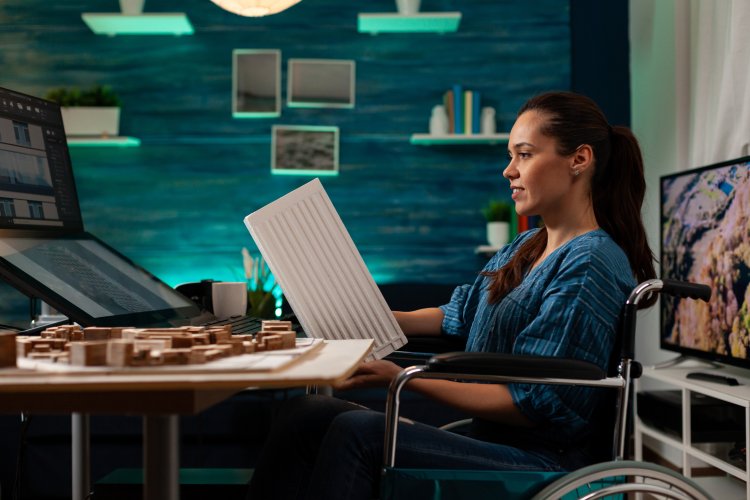Innovative Accessibility Solutions Transforming Inclusive Design Today
They focus on enabling independence and equal access in environments that were once challenging or impossible to navigate.
Share this Post to earn Money ( Upto ₹100 per 1000 Views )

Innovative accessibility solutions are transforming how people with disabilities interact with the world. These advancements range from cutting-edge technology to thoughtful design changes that remove barriers and improve daily life. They focus on enabling independence and equal access in environments that were once challenging or impossible to navigate.
By integrating smart devices, adaptive tools, and inclusive interfaces, these solutions address diverse needs across mobility, communication, and sensory experiences. Their development relies on both technological progress and a deeper understanding of user-specific challenges, creating practical tools for real-world use.
Organizations and designers increasingly prioritize accessibility, recognizing that innovation must serve everyone. As a result, these solutions are becoming more widespread, practical, and essential in public and private spaces alike.
Core Innovative Accessibility Solutions
Accessibility solutions now integrate advanced technology and design to address various physical, sensory, and cognitive needs. These innovations improve independence and usability across multiple environments.
Digital Platforms and Assistive Technologies
Digital platforms embed accessibility features such as screen readers, voice control, and customizable interfaces to enhance usability. Assistive technologies include devices like refreshed speech-generating tools and adaptive keyboards.
Software developments focus on compatibility with standards like WCAG (Web Content Accessibility Guidelines) to support users with visual or motor impairments. Mobile apps offer real-time transcription and translation to support communication for those with hearing or speech difficulties.
AI-driven solutions like predictive text and personalized learning apps further enable individuals with cognitive challenges. These tools improve digital access across education, work, and leisure.
Smart Home and IoT Applications
Smart home devices equipped with voice assistants and sensor networks enhance independence for people with mobility or sensory limitations. IoT applications allow remote control of lights, thermostats, and security systems through smartphones or voice commands.
Automated door openers and environmental controls adapt to individual needs, reducing the necessity for physical interaction. These technologies also integrate alert systems for emergencies, improving safety at home.
Many products prioritize interoperability, allowing diverse devices to work seamlessly together, creating a cohesive environment tailored to users’ requirements.
Accessible Transportation Systems
Transportation innovation includes low-floor buses, adjustable vehicle controls, and real-time location tracking for those with mobility or sensory impairments. Accessible transit apps provide route planning with detailed information on wheelchair ramps and audio announcements.
Paratransit services increasingly use booking apps optimized for accessibility, ensuring better reliability. Autonomous vehicle technology is developing adaptive driving modes that accommodate various disabilities.
Infrastructure improvements such as tactile paving and audible traffic signals support navigation for visually impaired travelers. Collectively, these solutions improve travel independence and inclusivity.
Emerging Trends and Industry Advancements
Recent developments in accessibility focus on leveraging new technologies and rethinking physical environments. These changes aim to make spaces and digital content more usable for people with diverse needs.
AI-Driven Accessibility Tools
AI-powered tools are transforming accessibility by automating customization and adaptation. For example, real-time captioning services use speech recognition to transcribe spoken words instantly for deaf or hard-of-hearing users.
Machine learning algorithms improve image recognition, enabling better screen reader descriptions for visually impaired users. AI also personalizes interfaces based on user behavior, adjusting text size, contrast, or navigation styles without manual input.
Prominent AI features include voice assistants that provide hands-free control and predictive text that aids users with motor impairments. These tools emphasize efficiency and accuracy, reducing the time and effort required to access digital content.
Inclusive Design in Urban Spaces
Cities are incorporating inclusive design principles to create environments accessible to everyone. This includes tactile paving for visually impaired pedestrians and adjustable pedestrian signal timings catering to slower walkers.
Public transit systems are integrating ramps, audio announcements, and low-floor vehicles to improve mobility. Urban planners also focus on multisensory signage and clear wayfinding to assist people with cognitive disabilities.
Smart city technologies play a role by providing real-time location data and emergency alerts via accessible mobile apps. These advancements strive to remove physical and informational barriers in urban settings.













